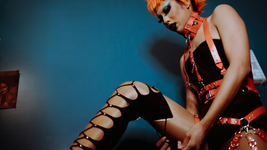FAHRELNISSA ZEID Exhibition - Tate Modern
- Sara Naffa
- Sep 30, 2017
- 2 min read
Until 8th October 2017
Price: £13.30
This may be your last chance to be captivated by Fahrelnissa Zeid’s effortlessly prismatic exhibition at the Tate Modern.

The Fahrelnissa Zeid exhibition at the Tate Modern manages to smoothly chronicle Zeid’s expansive history and influences without overwhelming audiences with her personal journeys (of which there are many). The carefully curated rooms are divided in a way to celebrate the artistic stages in Zeid’s life and to punctuate the works, rather than distract from them. You gain insight on how a marriage to an Iraqi monarch, a coup d’etat and a newfound life of domestication all inspire her work and her progression from free-flowing abstraction to the more classical art style of portraiture.
Zeid, an influential player in Turkish Modernism, is able to seamlessly blur the lines between the East and the West. The fusion of modern, European inspirations with traditional Islamic, Ottoman and Byzantine motifs in her work are both assertive and masterful.

The rooms are divided into collections of her work which follow a similar stylistic pattern. We first see the early development of her now distinctive style in the first room.
We learn of the impact of the war and her partnership with the art collective, the ‘D’ Group in the following paintings. When reflecting on a piece made whilst in Baghdad, Zeid notes her stimulus in ‘the rhythmic movement of the walk of Bedouin women’. It is in the second room where we see the prominence of Middle Eastern imagery embedded in her highly abstract pieces.

The paintings in the next room are interspersed with selected information from Zeid’s own personal journals (circa the late 1940s and early 1950s) wherein we see her confidence in abstraction build as she frequents Paris and London with her husband, Prince Zeid Al-Hussein. It is here when she creates her largest and, arguably, most impactful pieces.
We follow Zeid as she suffers through the overthrowing of the Hashemite Monarchy and her own internal afflictions in the following rooms. There is a softening of the lines, a dulling of colour palette and a movement away from the geometric harshness of her previous work.
Finally, we reach the closing room. It is in her last years as an artist and after a period of domestication in Amman, where we see Zeid end her chapters as an artist in the large self-portraits and paintings of companions which hang strikingly around you.
The Fahrelnissa Zeid exhibit covers so much more than the art of abstraction and the unification of East and West. The exhibit is moving and gutsy and is a must see for both Modern Art enthusiasts and Fine Arts enthusiasts alike - so catch it as soon as you can.

































